 |
||
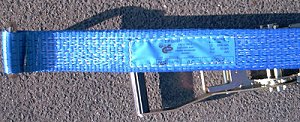 |
Textile lashing belts |
|
Pre-fabricated lashing belts have already been described in detail in the GDV Cargo Securing Manual. It is assumed that staff will be familiar with how to use systems of this kind and that no more than an occasional note is needed. There is no need to calculate with rules of thumb, since pre-fabricated lashing belts usually carry a label indicating the Lashing Capacity (LC). This is the permissible lashing force (Fmax) which can be used to secure cargoes.
 |
Polyester lashing belt |
The values given on the label can therefore be accepted as the MSL. The breaking load of a belt of this kind is double this value and the standard therefore sets the LC at 50% of the breaking strength (The CSS also names "50% of breaking strength" as the permitted value).
In relation to all lashings used, the proportion of pre-fabricated lashing belts is small, since the belt systems can only be returned with specific shipping companies and cargo types. Flexibility suffers in day-to-day lashing operations as a result of fixed lengths and sewn-in end fittings. Due to the speed with which they can be applied, however, the proportion of these lashings being used is constantly growing. If lashing of this kind is used, however, it should be applied out correctly and professionally.
 |
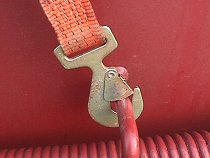 |
|
| Use of unsuitable end fittings | ||
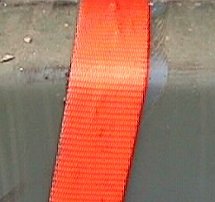 |
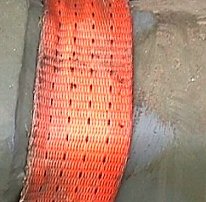 |
|
| Chafing points due to incorrect usage of the belt | ||
Belt systems permanently installed in containers must also be included among the pre-fabricated systems.
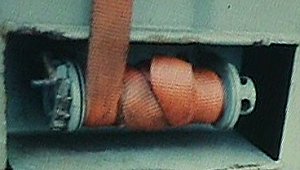 |
Lashing winch with incorrectly wound belt |
The lashings below used to secure automobiles must also be classed as pre-fabricated goods.
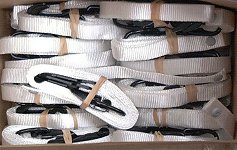 |
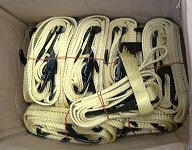 |
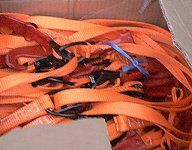 |
 |
|
 |
||
| Various automobile lashings |
 |
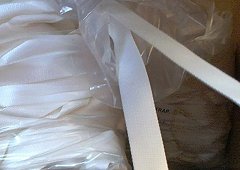 |
|
 |
The CSS do not provide any rules of thumb for the breaking load of single-use webbing belts, but refer to the manufacturer's specifications. 70% is given as a factor for the MSL.
| MSL for synthetic fiber lashing belts = breaking load as per manufacturer's specification x 0.7 |
 |
Marking on a single-use textile belt |
The breaking strength is specified as 3,500 kg on the label, i.e. 3,433.5 daN. The MSL would then be 70% of this, or 2,403 daN.
In the opinion of the author, this is far too high. It is well-known that in defining this factor the national interests of some IMO members played a greater role than the known problems associated with single-use lashing belts, where the quality of production differs. They are often very elastic. Some materials exhibit permanent deformation at threshold loads above 50% of the breaking load. This means that the lashings made from them will then become slack. Since they are also identical in many other ways to synthetic fiber ropes, the author recommends that at least the 50% factor of the European and German standards is assumed for pre-fabricated lashing belts. For the material discussed above, this would be a value of 1,717 daN. If the author were personally responsible for lashing work, he would only assume the value for synthetic fiber ropes, i.e. 33% of the breaking load. For a belt with a breaking load of 3,433 daN (3,600 kg), this would be 1,133 daN. Since belts are nearly always used doubled, the value would double accordingly.
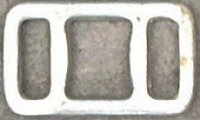 |
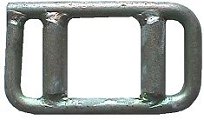 |
 |
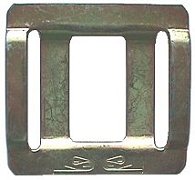 |
|
| Various locking devices for use with single-use textile lashing belts | ||
It is useful and practical to have operating instructions stamped onto the locking devices.
 |
||
 |
||
| Packaging straps |
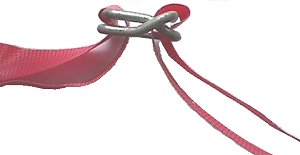 |
|
Packaging straps of this kind are only suitable for securing individual, relatively light packages on pallets and similar supports as well as for unitization.
 |
 |
 |
|
 |
 |
 |
|
| Two different types of end fittings | |||
There are a huge variety of end fittings and other connecting elements available. It is important to select the one which best suits the lashing points on the particular cargo transport unit.
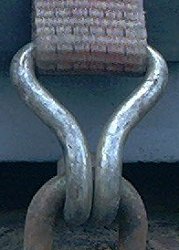 |
Incorrectly inserted hook |
Hooks must where possible be hooked in from the bottom to the top or from the inside to the outside, so that they cannot loosen if jolted during transport, should the lashing become slack.
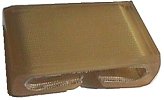 |
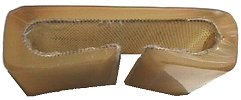 |
|
| Belt protectors | ||
It is essential that belts are protected against sharp edges whether this be by means of belt protectors or special sleeves. If this is not possible or items like this are not available, edge protectors are to be used:
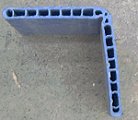 |
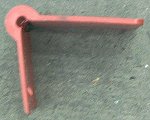 |
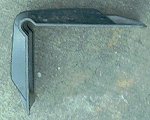 |
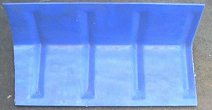 |
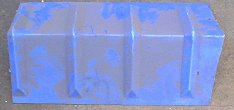 |
 |
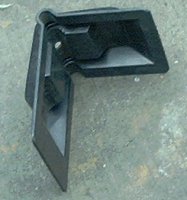 |
|
| Various edge protectors | ||
There are a number of different devices available for tensioning textile lashing belts.
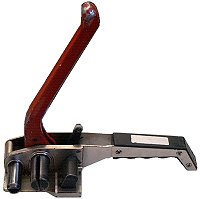 |
Belt tensioner |
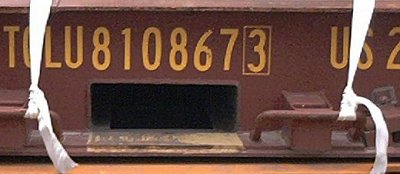 |
|
| Knotted textile belts |
Belts and straps must not be knotted and twisted. They must rest on a wide surface and must not be tightened over sharp edges. Damaged belt material must be removed from stock.
 |
Knotted textile belts - locking devices or buckles too weak |
| Single-use textile belts are unsuitable for use as tie-down lashing |
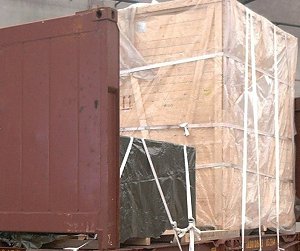 |
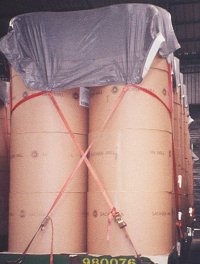 |
Tight-fit friction securing with a WisaFix lashing cover |
Using tarpaulins of this kind results in a combination of tight-fit and friction securing.